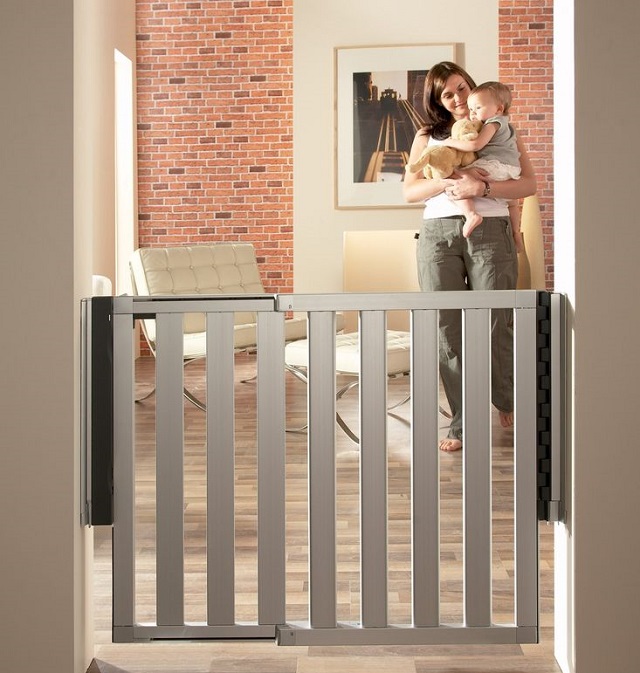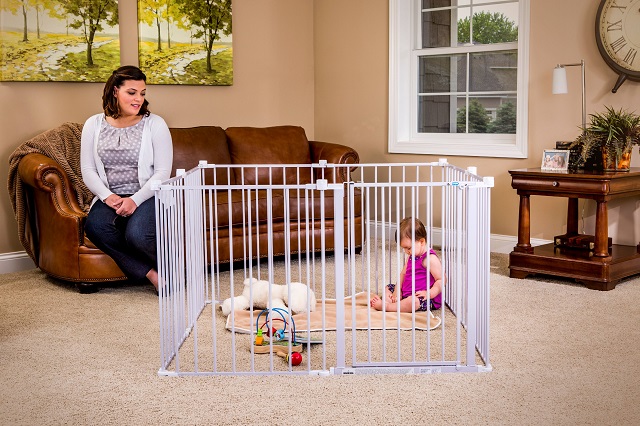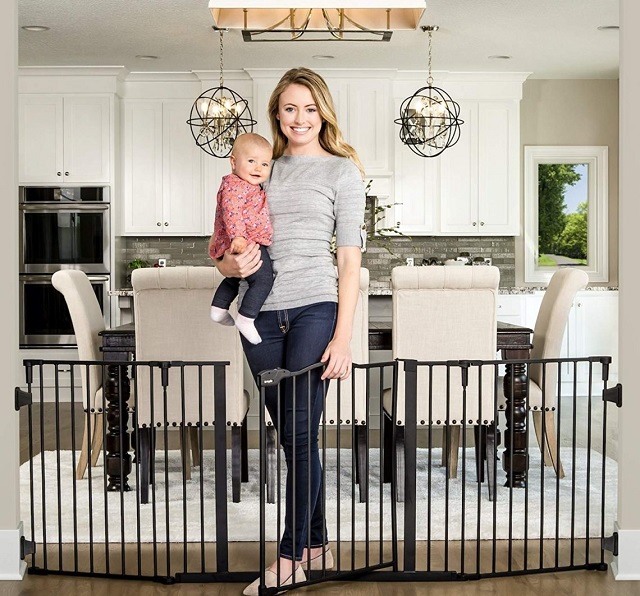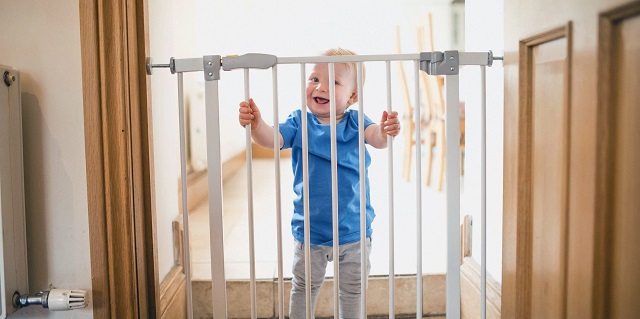The Lowdown on Safety Gates for Babies
Do you really need baby gates? The answer is a resounding “yes” if you want to ensure the safety of your crawling baby and toddler. It’s still a good idea even if you can be with your child and watch him/her for every minute of their waking hours. Imagine what would happen if you took your eye away from your child for a fraction of a second and he/she fell down the stairs, or entered the kitchen or bathroom where there are typically many hazards!
With a baby safety gate, you can allow your baby to happily explore their surroundings with the peace of mind they won’t be able to get anywhere they aren’t supposed to. Install them in any place that is off-limits and your house will be ready for your baby to safely roam about.
Which Baby Safety Gate is Best?
Once you start shopping for safety gates for babies you’ll discover that there are several types, each with its advantages and disadvantages. Here is an overview of the different types available.
Hardware-Mounted Baby Gate

This type of baby gate is designed to be securely attached to the framing of your home’s walls. To keep the gate from falling over, a bracket is installed into either a doorframe or the frame behind the walls. Screwing the baby-gate mount into the drywall or plaster alone will not ensure stability.
According to statistics, a child is treated for a stair-related injury every six minutes, so it makes sense to seek out the most secure options available. Hardware-mounted baby gates are recommended as the best child safety gates for stairs because the risk of them tipping over is much lower when properly installed than pressure-mounted ones.
Pressure Mounted Baby Gate
Pressure-mounted safety gates for babies feature an expandable spring system that secures them in place by squeezing them between two walls or other surfaces, creating pressure to keep them in place. On both sides, there are usually rubber pieces that help secure the gate and protect your walls. When it comes to reliable baby gates, even a high-quality pressure-mounted model isn’t recommended for any type of staircase because there is a chance of the gate toppling over if not properly secured. They are a better option for areas that are level and flat, such as doorways.
Configurable Baby Gates

Configuration baby gates allow you to create a worry-free play area for your little one both inside and outside for fun backyard play. One of their great benefits is that they can be set up anywhere you like. Because they’re extendable, they can also fit non-standard or irregular openings, so you can get the gate out wide as much as you want.
Factors to Consider When Choosing a Baby Gate
Safety Certification
When purchasing a gate, check if it’s certified by responsible groups that make sure they are well-tested and meet all required standards and government regulations.
Easy Installation

Gates that come with a manual and that have installation videos freely available online for you to follow make installation easier. If you end up with a gate that is difficult to put together, you might get frustrated and not use it.
Sturdy Materials
A good gate will be able to handle pressure and strength well, meaning it won’t fall off when your little one tries to push it. A gate such as this can usually handle around 10 to 20 kilos of pressure. Also, keep in mind that the majority of sturdy and reputable gates will come with a warranty as well.
Height and Adjustability
Gates that allow adjustability help ensure a perfect, secure fit. Still, consider measuring the areas in your home where you would like to install the gate to make sure the gate can stretch up to your desired width.
Safety of Components

Take a look at all the parts within your gate and make sure none of them can come off and hurt your little one. Also, consider checking the manufacturer and their track record on safety. There shouldn’t be more than 2.5 to 5cm between the gate bottom and the floor to keep the child from slipping underneath and the rigid vertical slats or rods should be no more than 6cm apart to prevent the child’s head from getting trapped between the slats.
Begin planning early and installing gates by the time your child is six months old. This is when they begin rolling around and crawling. Remove the gates only after your child has mastered all of their dexterous abilities. As a parent, it’s your responsibility to test your child’s abilities and observe how they walk up and downstairs as they grow older.
Children are pretty good at walking by the age of three, but every child is different, so make sure that your child can go up and down the stairs cautiously and without running. Because each child is unique, allow them to take their time before removing any gates.